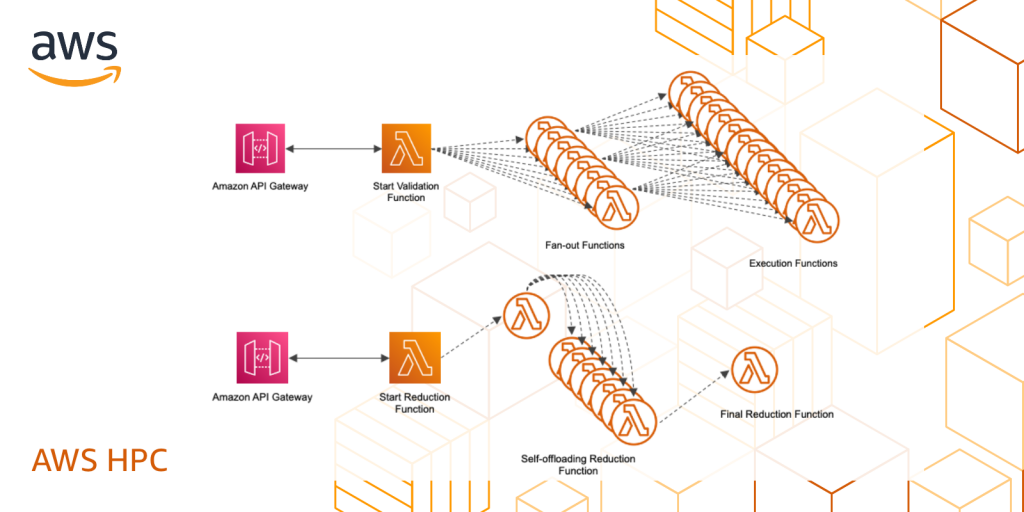AWS HPC Blog
Category: Customer Solutions
Accelerating drug discovery with Amazon EC2 Spot Instances
We have been working with a team of researchers at the Max Planck Institute, helping them adopt the AWS cloud for drug research applications in the pharmaceutical industry. In this post, we’ll focus on how the team at Max Planck obtained thousands of EC2 Spot Instances spread across multiple AWS Regions for running their compute intensive simulations in a cost-effective manner, and how their solution will be enhanced further using the new Spot Placement Score API.
How we enabled uncompressed live video with CDI over EFA
We’re going to take you into the world of broadcast video, and explain how it led to us announcing today the general availability of EFA on smaller instance sizes. For a range of applications, this is going to save customers a lot of money because they no longer need to use the biggest instances in each instance family to get HPC-style network performance. But the story of how we got there involves our Elastic Fabric Adapter (EFA), some difficult problems presented to us by customers in the entertainment industry, and an invention called the Cloud Digital Interface (CDI). And it started not very far from Hollywood.
Using the Slurm REST API to integrate with distributed architectures on AWS
The Slurm Workload Manager by SchedMD is a popular HPC scheduler and is supported by AWS ParallelCluster, an elastic HPC cluster management service offered by AWS. Traditional HPC workflows involve logging into a head node and running shell commands to submit jobs to a scheduler and check job status. Modern distributed systems often use representational […]
Running the Harmonie numerical weather prediction model on AWS
The Danish Meteorological Institute (DMI) is responsible for running atmospheric, climate and ocean models covering the kingdom of Denmark. We worked together with the DMI to port and run a full numerical weather prediction (NWP) cycling dataflow with the Harmonie Numerical Weather Prediction (NWP) model to AWS. You can find a report of the porting and operational experience in the ACCORD community newsletter. In this blog post, we expand on that report to present the initial timing results from running the forecast component of Harmonie model on AWS. We also present these as-is timing results together with as-is timings attained on the supercomputing systems based on Cray XC40 and Intel Xeon based Cray XC50.
Quantum Chemistry Calculation with FHI-aims code on AWS
This article was contributed by Dr. Fabio Baruffa, Sr. HPC and QC Solutions Architect at AWS, and Dr. Jesús Pérez Ríos, Group Leader at the Fritz Haber Institute, Max-Planck Society. Introduction Quantum chemistry – the study of the inherently quantum interactions between atoms forming part of molecules – is a cornerstone of modern chemistry. […]
Supporting climate model simulations to accelerate climate science
The Amazon Sustainability Data Initiative (ASDI), AWS is donating cloud resources, technical support, and access to scalable infrastructure and fast networking providing high performance computing solutions to support simulations of near-term climate using the National Center for Atmospheric Research (NCAR) Community Earth System Model Version 2 (CESM2) and its Whole Atmosphere Community Climate Model (WACCM). In collaboration with ASDI, AWS, and SilverLining, a nonprofit dedicated to ensuring a safe climate, the National Center for Atmospheric Research (NCAR) will run an ensemble of 30 climate-model simulations on AWS. The climate runs will simulate the Earth system over the period of years 2022-2070 under a median scenario for warming and make them available through the AWS Open Data Program. The simulation work will demonstrate the ability to use cloud infrastructure to advance climate models in support of robust scientific studies by researchers around the world and aims to accelerate and democratize climate science.
High Burst CPU Compute for Monte Carlo Simulations on AWS
Playtech mathematicians and game designers need accurate, detailed game play simulation results to create fun experiences for players. While software developers have been able to iterate on code in an agile manner for many years, for non-analytical solutions, mathematicians have had to rely on slow CPU-bound Monte-Carlo simulations, waiting, as software engineers once did, many hours or overnight to get the results of their latest changes. These statistics are also required as evidence of game fairness in the highly regulated online gaming business. Playtech has developed an AWS Lambda Serverless based solution that provides massive burst compute performance that allows game simulations in minutes rather than hours. This post goes into the details of the architecture, as well as some examples of using the system in our development and operations.
Stion – a Software as a Service for Cryo-EM data processing on AWS
This post was written by Swapnil Bhatkar, Cloud Engineer, NREL in collaboration with Edward Eng Ph.D. and Micah Rapp Ph.D, both SEMC/NYSBC, and Evan Bollig Ph.D. and Aniket Deshpande, both AWS. Introduction Cryo-electron microscopy (Cryo-EM) technology allows biomedical researchers to image frozen biological molecules, such as proteins, viruses and nucleic acids, and obtain structures of […]
Accelerating research and development of new medical treatments with HPC on AWS
Today, more than 290,000 researchers in France are working to provide better support and care for patients through modern medical treatment. To fulfill their mission, these researchers must be equipped with powerful tools. At AWS, we believe that technology has a critical role to play in medical research. Why? Because technology can take advantage of the significant amount of data generated in the healthcare system and in the research community to enable opportunities for more accurate diagnoses, and better treatments for many existing and future diseases. To support elite research in France, we are proud to be a sponsor of two French organizations: Gustave Roussy and Sorbonne University. AWS is providing them with the computing power and machine learning technologies needed to accelerate cancer research and develop a treatment for COVID-19.
Training forecasters to warn severe hazardous weather on AWS
Training users on how to use high performance computing resources — and the data that comes out as a result of those analyses — is an essential function of most research organizations. Having a robust, scalable, and easy-to-use platform for on-site and remote training is becoming a requirement for creating a community around your research mission. A great example of this comes from the NOAA National Weather Service Warning Decision Training Division (WDTD), which develops and delivers training on the integrated elements of the hazardous weather warning process within a National Weather Service (NWS) forecast office. In collaboration with the University of Oklahoma’s Cooperative Institute for Mesoscale Meteorological Studies (OU/CIMMS), WDTD conducts its flagship course, the Radar and Applications Course (RAC), for forecasters issuing warnings for flash floods, severe thunderstorms, and tornadoes. Trainees learn the warning process, the science and application of conceptual models, and technical aspects of analyzing radar and other weather data in the Advanced Weather Interactive Processing System (AWIPS).






